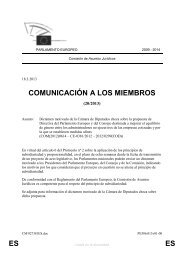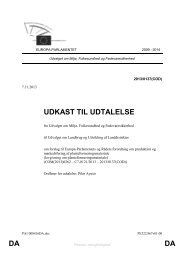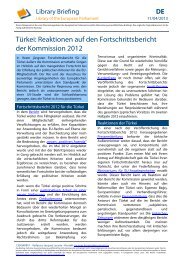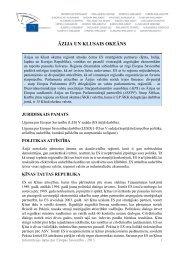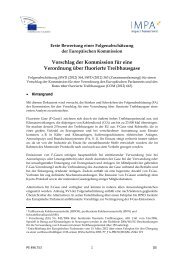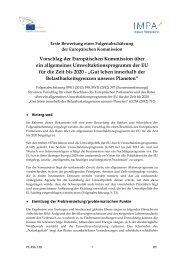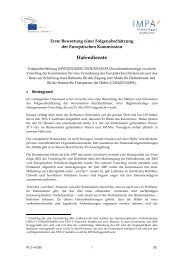PARLIAMENT AND DEMOCRACY - Inter-Parliamentary Union
PARLIAMENT AND DEMOCRACY - Inter-Parliamentary Union
PARLIAMENT AND DEMOCRACY - Inter-Parliamentary Union
You also want an ePaper? Increase the reach of your titles
YUMPU automatically turns print PDFs into web optimized ePapers that Google loves.
184 I <strong>PARLIAMENT</strong> <strong>AND</strong> <strong>DEMOCRACY</strong> IN THE TWENTY-FIRST CENTURY<br />
The study also shows that parliaments take seriously the challenge to<br />
engage in an ongoing process of reform themselves, and to make their own<br />
practices more open, accountable and responsive. Democratisation is not a<br />
one-off event, but a continuing process, in both recent and long-established<br />
democracies. In the IPU survey for this Guide, parliaments were invited to<br />
report on some examples of recent reforms they had instituted. The main part<br />
of this chapter will consider their returns, not so much for the content of<br />
the reforms, but for what they tell us about the process and dynamics of<br />
parliamentary reform, and some of the potential difficulties experienced.<br />
A concluding section will consider how parliaments can contribute to<br />
society’s planning for the future.<br />
Sources of reform<br />
The reform process<br />
To judge from the submissions received, parliamentary reform has many<br />
different sources, which vary widely from one parliament to another. It might<br />
be useful, however, to offer a provisional map of the most typical sources of<br />
change reported, to help make sense of these different reform experiences.<br />
Naturally, these sources should be seen as often complementary and interactive,<br />
as the diagrammatic presentation suggests, rather than as isolated points<br />
of change.<br />
For convenience these sources can be divided into extra-parliamentary and<br />
intra-parliamentary ones. Among the chief extra-parliamentary reasons for<br />
reform are the following:<br />
■ Changing societal needs. These can be as various as are the different types<br />
of society, and they constitute a typical source of new or revised legislation.<br />
But they can also lead to changes in the way parliament itself works.<br />
Example: the changing role of women in society leads to changes in<br />
political representation and in the way parliament conducts its business.<br />
■ Pressures from the public. Again these are enormously variable, but a<br />
common element for many parliaments is the perception of a growing gulf<br />
between parliament and the electorate, especially young people, which<br />
leads to experimentation with new modes of public access to parliament.<br />
■ Technological change. The most obvious example is the rapidly changing<br />
world of information technology, with its consequences for how parlia-




